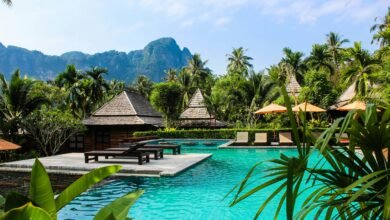12 Tips to Take Better Photos During a Trek

In addition to being a physical adventure, trekking in the Himalayas is a visual feast. At every turn, there are beautiful views of snow-capped peaks, colorful sunsets, prayer flags flapping in the breeze, and rhododendron-lined trails.
Pointing and shooting alone, however, is not enough to capture these scenes well. These 12 suggestions can help you shoot better pictures while walking to Everest Base Camp, Annapurna Base Camp, or any other Nepali trail.
1. Start Early in the Day
Early in the morning is typically the greatest time of day to take pictures of mountains. The golden hour light softly illuminates the peaks, highlighting their textures and colors, while the sky is often clearer.
This advice is very crucial for the Everest Base Camp Trek. With breathtaking views of Everest, Lhotse, and Nuptse, the best views are frequently seen in the early morning hours from Lobuche, Gorak Shep, or Kala Patthar. The mountains are often obscured by clouds that accumulate throughout the day. Additionally, wind increases, which makes handheld photography more difficult and unstable. You can benefit from the clear, peaceful light by getting started early.
2. Bring the Right Camera Gear
You will get the best image quality if you carry a DSLR or mirrorless camera. You can adjust the settings of a lightweight camera with manual controls to suit the lighting conditions. A zoom lens is useful for taking unposed pictures of people and yaks on the route. In contrast, a wide-angle lens is excellent for photographing expansive landscapes.
For steadiness when using a smartphone, consider using a small tripod or a mobile gimbal. Additionally, for more versatility in post-editing, learn how to shoot in RAW or Pro mode.
3. Carry Extra Batteries and Power Backup
Cold weather and high altitude drain battery life quickly. Make sure to carry at least 2–3 fully charged spare batteries or a high-capacity power bank.
This becomes crucial on the Annapurna Base Camp Trek, especially beyond Deurali, where electricity becomes scarce. Machhapuchhre Base Camp (MBC) and Annapurna Base Camp (ABC) rely heavily on solar power. During cloudy days or busy seasons, you may not get a chance to recharge your devices. Ironically, this section of the trail offers some of the most photogenic scenes, panoramic views of Annapurna I, Fishtail, and the surrounding glaciers. Missing your chance here due to dead batteries would be frustrating, so plan ahead to avoid this issue.
4. Learn the Basics of Photography
Although you don’t have to be an expert photographer, your images will look much better if you grasp the rules of thirds, exposure, ISO, and shutter speed. To feel comfortable adjusting settings while on the road, practice beforehand during your vacation.
When taking pictures throughout the day, use a lower ISO. In low light or early morning, use a slightly higher ISO. To regulate the depth of field, adjust the aperture; a narrower aperture (higher f-stop) works well for landscapes, while a wider aperture (lower f-stop) can isolate subjects.
5. Use a Lightweight Tripod
You can capture long-exposure photos of waterfalls, starry skies, or timelapses of sunrises with a compact, foldable tripod. Additionally, when you use a lower shutter speed, it helps stabilize your camera. Avoid carrying bulky equipment on longer hikes, but ensure you pack something sturdy enough to support your camera.
The celestial sky is stunning on clear nights, particularly in isolated places like Dingboche or Manang. You can snap crisp, blur-free nighttime photos with a tripod.
6. Include Human Element
Including a human in your landscape photographs, even if they are only a silhouette, helps the soaring mountains and countless paths seem more substantial. Additionally, it gives your picture a more realistic and immersive sense.
Take pictures of other hikers relaxing by a chorten, strolling along a ridge, or perched on a viewpoint. An average shot might become dramatic and emotional with a lone hiker beneath Annapurna’s towering face or with Everest in the background.
Read More: Choosing the Right Travel Luggage: Your Ultimate Guide to Style, Safety, and Convenience
7. Keep Your Gear Safe and Dry
Trekking conditions can change at any time. Your equipment may sustain damage from unexpected snowfall, rain, or even dust from high altitudes. Keep a dry sack or waterproof camera case with you. Additionally, bring lens towels to wipe away moisture or fog.
You will encounter exposed sections, suspension bridges, and streams on trails like the Manaslu Circuit and Langtang Valley, all of which could endanger your equipment. When shooting in windy conditions or close to water, exercise particular caution.
8. Take Advantage of Natural Framing
Frame your topic using windows, stone archways, trees, or prayer flags. This draws the viewer’s attention to the main subject and gives your images more depth and context.
Beautiful visual effects can be produced, for instance, by filming Machapuchare through a teahouse window near Chhomrong or framing Ama Dablam in Tengboche with vibrant prayer flags.
9. Be Patient and Observe
The best photos are sometimes the ones you waited for rather than the ones you hurried to take. Wait for someone to enter your frame, see how the light changes, or watch the clouds move.
In locations like Gokyo Lakes, where the still water can mirror the mountains — but only in the absence of wind, this is especially satisfying. When nature is at its best, time your shot, sit quietly, and observe.
10. Shoot in RAW Format
Use RAW if your smartphone or camera supports it. RAW photos preserve all of the sensor’s information, allowing for significantly greater editing freedom without sacrificing quality.
This is helpful in situations where there is a lot of contrast, such as snowy mountains in direct sunshine, where certain areas of the picture may be overexposed or underexposed. Compared to JPEG, RAW allows for more precise adjustments to highlights and shadows.
11. Capture the Culture and People
Don’t only concentrate on mountains. Take pictures of villagers, monks, or other hikers. Take photos of classic residences, monasteries, and busy marketplaces. In addition, trekking is a cultural experience, and these pictures frequently have greater emotional significance than the mountains themselves.
You will pass through Sherpa, Gurung, and Magar villages on the Everest or Annapurna paths; take some time to respectfully capture pictures of the local way of lifestyle, customs, and architecture.
12. Tell a Story Through Your Photos
Consider your voyage as a visual narrative rather than a series of haphazard photos. Start with the initial thrill in Kathmandu or Pokhara, proceed through the trials and rewards of the journey, and conclude with the achievement at the end.
Note specifics such as yak caravans, muddy boots, steaming tea mugs, trail signs, and even breaks. When you look back on your adventure or share it with others, these pictures help capture the whole experience.
Final Thoughts
Expensive equipment and ideal lighting are not the only requirements for excellent trekking photography. It all comes down to awareness, patience, and living in the present. The Himalayas provide countless photographic opportunities, whether your goal is to capture sunrises at Poon Hill, vistas of the glaciers from Everest Base Camp, or brilliant sunsets over the Annapurna range.
Get your gear ready, pay attention to your surroundings, and most of all, have fun on the trip. The best photographs, after all, aren’t only technically sound; they also capture the emotion of being there.




